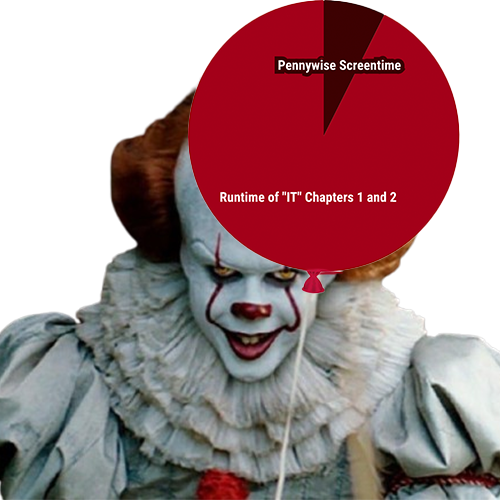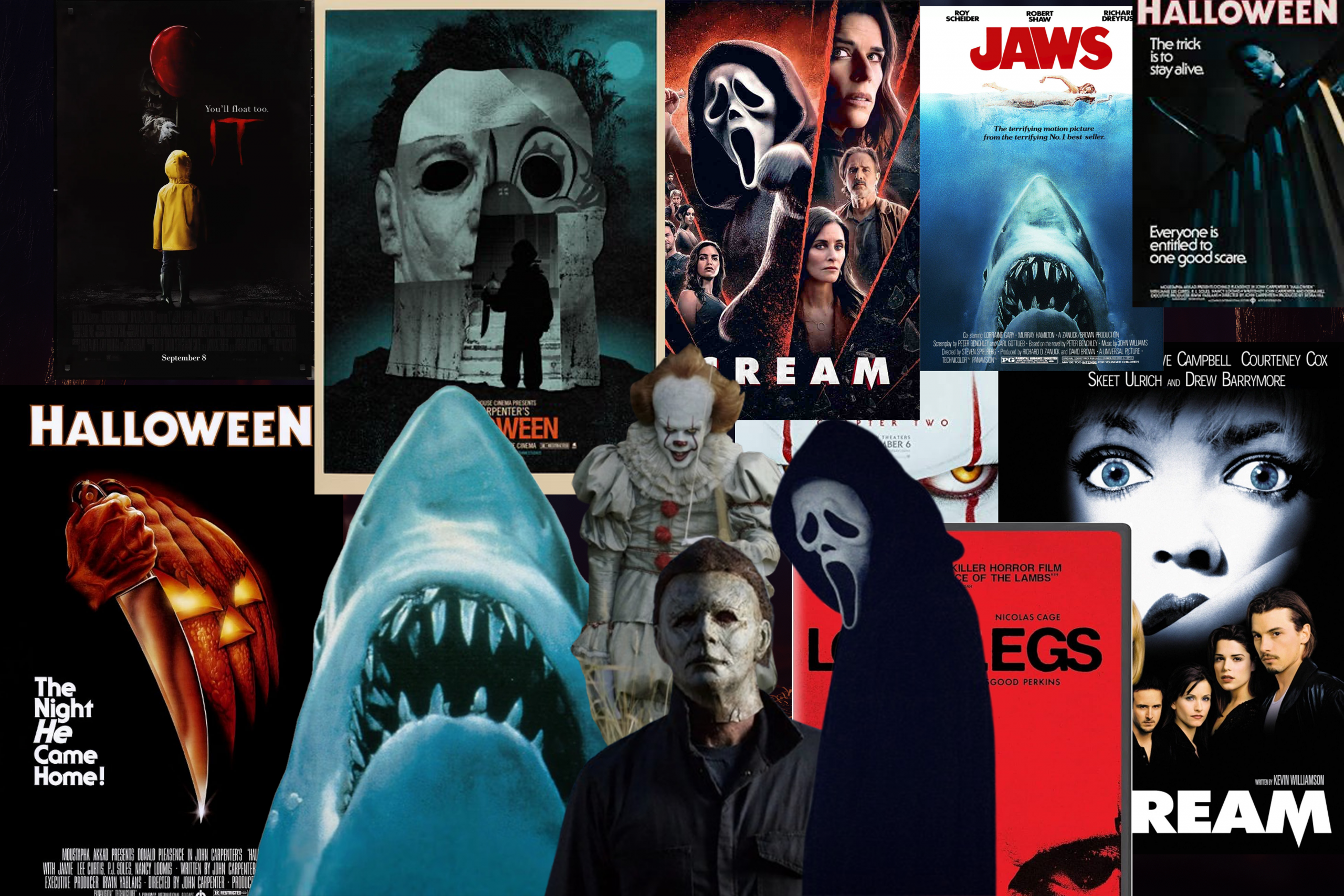Scary Stats: Why Some of Horror’s Most Iconic Villains Have Limited Screen Time
When Steven Spielberg’s “Jaws” was released in 1975, it not only redefined summer at the movies, becoming the first summer blockbuster, it also redefined how people thought of sharks, causing a massive and mostly newfound terror of these ocean dwellers . And yet, yes, out of the 130 minute runtime of “Jaws” Bruce ( infamous Jaws shark that caused an immediate slump in beach tourism and led to the wide destruction of shark populations) was actually only seen on screen for about four minutes, about 3% of the film. Those four minutes of fame were enough to ignite a sharkphobia never before seen, and “Jaws” became one of the most iconic memorable movies ever.
That’s the strange psychology of horror – it turns out the scariest, most iconic villains don’t have much screentime at all. We wanted to learn more about this seemingly counterintuitive phenomenon, so took a look at some terrifying classics to see how this theory held up.

Characters That Never Die
Take a moment to think about the costumes that you see every halloween. Yes, trends come and go, but what are some staple iconic costumes never fade. Year after year, you’re bound to spot at least one Ghostface, Pennywise, or Michael Myers roaming the streets.
While these characters are the most famous from their respective films, none of these horror villains actually spend that much time on screen. In the original “Scream” (1996), Ghostface appears for just about 5 minutes and 58 seconds on screen, about 5.4% of the time in the 111 minute iconic slasher film. For this count, only moments when the mask is on screen are included.
Despite that small piece of screen time, the Ghostface mask became a retail staple and the character powered a long-running franchise. It turns out, the limited visibility is actually central to the appeal. The mystery of who is under the mask drives the film’s underlying tension, with the symbol doing the cultural legwork. Fewer minutes means bigger anticipation. Ghostface’s impact was strong enough to carry the character through sequel after sequel, spanning nearly three decades. Horror doesn’t just build franchises on storylines, it builds them on characters.
Take another blockbuster hit: “Halloween.” Across more than a dozen sequels and reboots, Michael Myers consistently averages only about 10 to 15 minutes of screen time per film. It doesn’t matter if the runtime stretches past 110 minutes as in Halloween Ends (2022), or stays closer to 90 minutes, like in the 1978 original, Myers himself is on screen for just a tiny portion of the runtime, and he never says a single word.
And yet, when people think of the “Halloween” franchise, they think of Michael Myers. The white mask, the slow walk, the inevitability of his return. If you’ve heard of the franchise at all, you’ve probably heard of him, or seen his mask hanging in a costume aisle every October. He doesn’t just appear in Halloween movies, he is the Halloween movies.

This same formula works for “It”. Pennywise barely appears in either installment, 11 minutes in the 2017 film, and just over 13 in “It: Chapter Two” (2019). Still, 11 minutes is enough time to imprint that red balloon in the minds of viewers and make them all terrified of drains.
In Variety’s #1 ranked horror movie of 2024, “Longlegs”, the character of longlegs was “haunting” and “horrific,” with viewers saying they had trouble sleeping after seeing him on screen. Even though longlegs appears for only about eight minutes in its 101-minute runtime, those minutes clearly lingered far beyond the film.
These characters are not a constant presence. A few slices of scares, a memorable visual, and an atmosphere built around absence are enough to haunt your mind long after.
The Science of Scarcity
When a villain appears only rarely, every moment counts. The audience is left to fill in the blanks with imagination, sound, shadow, fear of what’s just offscreen. This tension gets stronger the longer the villain stays hidden. The viewer is just waiting for something to happen. This build-up, the possibility that something might happen, combined with the sound and score, is foundational to the fear factor in horror movies.
Then, when that figure finally appears, we get a release. The villain’s appearance is amplified by contrast: after prolonged uncertainty, even a short glimpse feels scary. Our brain rewards that contrast. In effect, horror manipulates a fear relief loop: tension builds, the moment arrives, then we breathe again. That release itself becomes pleasurable.
Psychologists call this the excitation transfer theory: when the threat resolves, some residual energy carries over into positive emotion. So the experience of surviving the scare becomes pleasurable. Essentially, “surviving” a scary movie actually gives us a sense of achievement. Leaving viewers’ brains saying, “I survived ghostface from the comfort of my couch!”
Once the character becomes ingrained in our memory, merchandising becomes another secret weapon. Unlike the protagonists of these films, the antagonists often have a more recognizable look. How many people dress as Laurie Strode for Halloween? Not many, and if you haven’t seen “Halloween,” you might not even know who that is. But throw on a blue jumpsuit and white mask, and most people know who you are. These simple, yet memorable character designs make horror villains perfect for mass-market appeal.
Stitching it all together: when horror villains appear infrequently, they lean on our fascinating psychology. We wait and we imagine. They appear in pieces, their design is memorable, and our brains reward us for surviving their scares. That’s the trick behind limited screentime horror. Because in horror, it’s not about how long they’re on screen, it’s about how long they are remembered. Judging by the costumes and decorations on store shelves, not even just for Halloween, but year round, these characters aren’t going anywhere anytime soon.
- Is the US Ready for the World Cup? Our Roads Might Not Be. - December 16, 2025
- Payroll Power: How Spending Tells the Story of Baseball Success - November 6, 2025
- Scary Stats: Why Some of Horror’s Most Iconic Villains Have Limited Screen Time - October 30, 2025





